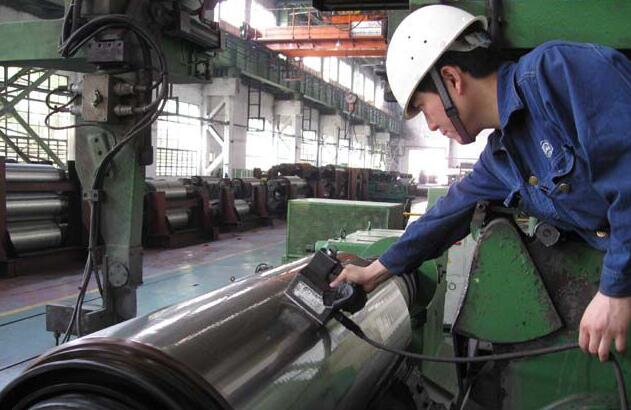Eddy current testing of steel pipes
Eddy current testing of steel pipes
Eddy current testing is a kind of testing method which uses electromagnetic induction principle to detect surface defects of components and metal materials.
The advantages of eddy current testing are:
(1) The testing coil does not need to touch the workpiece, and does not need coupling agent. It is easy to realize high-speed and high-efficiency automatic testing for the detection of pipes, rods and wires. It can also be tested at high temperature, or the narrow area of the workpiece and the deep hole wall can be reached by the probe.
(2) high sensitivity to detect defects on the surface and near surface of the workpiece.
(3) Using different signal processing circuits to suppress interference and extract different eddy current influencing factors, eddy current testing can be used for conductivity measurement, film thickness measurement and metal sheet thickness measurement.
(4) Because the detection signal is an electrical signal, the detection results can be digitized, stored, reproduced, processed and compared.
Limitations of eddy current testing:
(1)It is only applicable to the detection of conductive metal materials or nonmetallic materials that can induce eddy currents.
(2) Because of the effect of eddy current penetration, it is only suitable for inspecting metal surface and near surface defects, and can not inspect the deep internal defects of metal materials.
(3)There are many factors that affect the eddy current effect. It is difficult for qualitative and quantitative analysis of defects.
(4)For different parts, there are deficiencies in using different test coils.

Eddy current testing of steel pipes (ET)
A flaw detection method for detecting the surface and near surface defects of steel tubes is developed based on the principle of electromagnetic induction.
The principle is that the eddy current is produced in the steel pipe by the excitation coil, and the change of eddy current is measured by the detection coil, so as to obtain the relevant information of the steel pipe defects.
According to the shape of the detection coil, it can be divided into three types: through type (for wire, rod and pipe detection), probe type (for local detection of component surface) and insertion type (for internal detection of pipe hole).
Method of Eddy current testing
Eddy current detection is to set up alternating magnetic field by coil when the conductor is close to the coil with alternating current. The alternating magnetic field passes through the conductor and induces electromagnetic induction with the conductor to set up eddy current in the conductor. The eddy current in the conductor also produces its own magnetic field. The effect of the eddy current magnetic field changes the strength of the original magnetic field, which leads to the change of the coil voltage and impedance. When a defect occurs on or near the surface of a conductor, the strength and distribution of the eddy current will be affected. The change of the eddy current will cause the change of the voltage and impedance of the detecting coil. According to this change, the existence of the defect in the conductor can be known indirectly.




